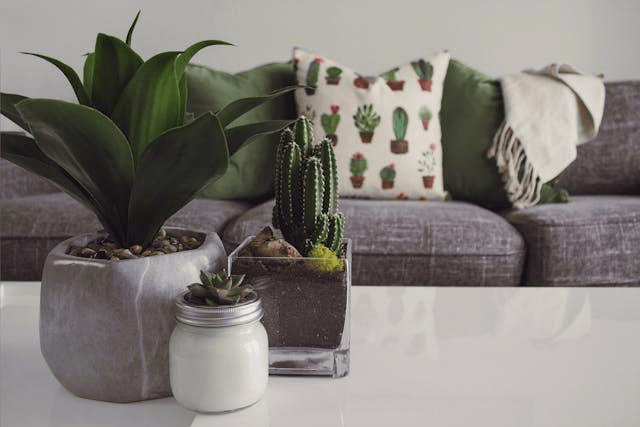Delicate décor refreshes your home and brings warmth and charm to every space. These items often hold personal meaning, and a single mistake can cause irreversible damage. Learning how to pack and unpack delicate décor the right way helps protect your investment and preserves memories connected to each piece. With proper planning, the process can be safe, organized, and stress-free.

Packing Best Practices and Warnings
Even when packed carefully, fragile items can suffer if materials fail. Many people underestimate the risks of cheap packing supplies, which often tear, lose shape, or fail to protect corners. Using sturdy materials costs more, but it keeps your items safe from pressure and vibration.
Do not overfill boxes. Extra pressure makes them difficult to close and increases the chance of breakage. Always fill empty spaces with soft material to prevent shifting. Label boxes clearly with “Fragile” and “This Side Up.” Consistent labeling helps movers and friends handle boxes properly.
Keep fragile boxes separate from heavier ones. Stacking light boxes on top of solid, heavy containers helps maintain balance. When loading into a car or truck, place delicate boxes last so you can unload them first. Careful placement reduces motion and impact damage.
Prepare Before You Pack
Before you start, prepare your space. Clear a large, flat surface so you can work comfortably without bumping into other objects. Clean the area and remove anything that could scratch or stain your décor. Preparation helps prevent last-minute panic and reduces accidents caused by clutter.
Next, gather your materials. Use high-quality boxes in various sizes, packing paper, bubble wrap, and tape. Avoid newspapers because the ink can transfer onto fragile surfaces. Foam sheets and soft cloths work well for padding. Keep scissors and labels nearby so you can close and mark boxes efficiently once they’re full.
It helps to group similar items together. Place glassware in one area, ceramics in another, and framed art in a third. Sorting makes it easier to wrap each category correctly. Remember to create an inventory list. It helps track what you packed and ensures nothing is forgotten during unpacking.
Packing Techniques for Every Material
Different décor trends and materials require different techniques. Start with glass and ceramic items. Wrap each piece in several layers of packing paper or bubble wrap. Cushion the inside of hollow items, like vases or bowls, with crumpled paper or foam. Pack these items upright in boxes, not sideways, to reduce pressure points.
For framed art, mirrors, and pictures, remove hooks or hanging wires before wrapping. Cover the front and back with soft padding. Add corner protectors to shield delicate edges. Once wrapped, place the frames vertically between layers of cardboard or foam board inside a sturdy box. Do not overload the box, as extra weight increases breakage risk.
Metal and decorative sculptures scratch easily. Cover them with cloth or foam to prevent friction. If the item has sharp edges, wrap them separately for safety. Avoid placing metal pieces with glass or porcelain. Their weight can crush lighter items during transport.
Textile-based décor needs gentler handling. For tapestries or fabric art, roll them around a cardboard tube to avoid creases. Use acid-free tissue paper for protection. Place rolled or folded textiles in shallow boxes. Avoid stacking heavy boxes on top of these to maintain their shape.
Handling and Transporting with Care
Once everything is packed, focus on handling. Carry fragile boxes with both hands. Keep them close to your body for stability. Do not drag or tilt them. If you are using a moving service, inform them which boxes contain delicate décor so they can handle them with care.
Load boxes strategically. Place them between softer household items, such as cushions or bedding. This adds another protective layer during travel. If your journey is long, avoid exposing items to extreme temperatures or humidity. Sudden climate shifts can cause cracking or warping, especially in glass and wood décor.
If possible, transport the most fragile pieces yourself. Keeping them nearby gives you peace of mind and allows you to control how they are handled. This method is ideal for one-of-a-kind or heirloom pieces that cannot be replaced.
How to Pack and Unpack Delicate Décor Safely
Once you arrive, take your time. Rushing leads to mistakes. Start by unpacking items in the reverse order you packed them. Begin with sturdier objects and leave the most fragile for last. Prepare the area first, clearing space and laying soft cloths on tables or counters.
Open each box carefully. Avoid sharp tools that might scratch or puncture. Remove top layers of padding gently and lift items by their strongest points, not their edges. Set them down slowly. Never pull or drag delicate décor across hard surfaces.
As you pack and unpack delicate décor, patience makes a big difference. Take small breaks if you feel tired or distracted. Consistent focus helps prevent accidents that come from rushing or multitasking. Always check the packaging before removing the next item to ensure nothing has shifted during transit.
Aftercare and Inspection
Once unpacked, inspect each item under good lighting. Look for cracks, chips, or scratches that might have occurred unnoticed. Minor issues can worsen if left untreated. Fix loose parts or clean surfaces before displaying them.
Avoid using harsh cleaning agents. A soft microfiber cloth removes dust and fingerprints safely. Let items adjust to room temperature before setting them in direct sunlight or near heat sources. Some materials expand or contract with temperature changes, leading to hidden stress fractures.
Document your items with photos for insurance or personal records. Keeping a visual catalog helps with future moves or redesigns. If you notice persistent issues like humidity damage or fading, adjust your display area to protect each piece better.
Keeping Décor Beautiful for Years
Your décor reflects your personality and style. Taking the time to pack and unpack delicate décor correctly protects both its beauty and its memories. Careful packing, gentle handling, and proper materials ensure that every item arrives in perfect shape.
After unpacking, enjoy the process of arranging everything again. Let each piece find its place naturally, just as it did before. With care and attention, your décor will remain a lasting part of your home’s comfort and charm.
